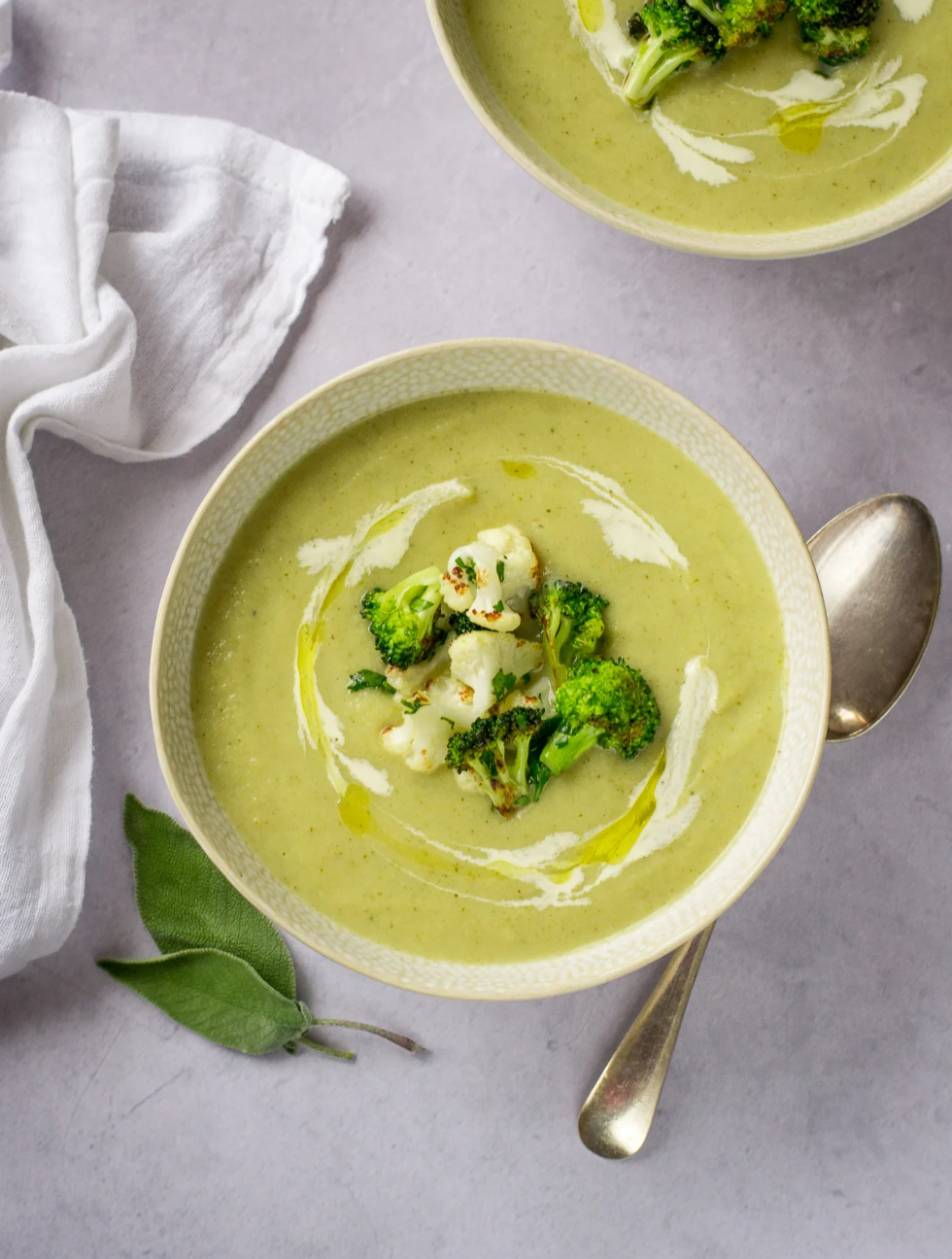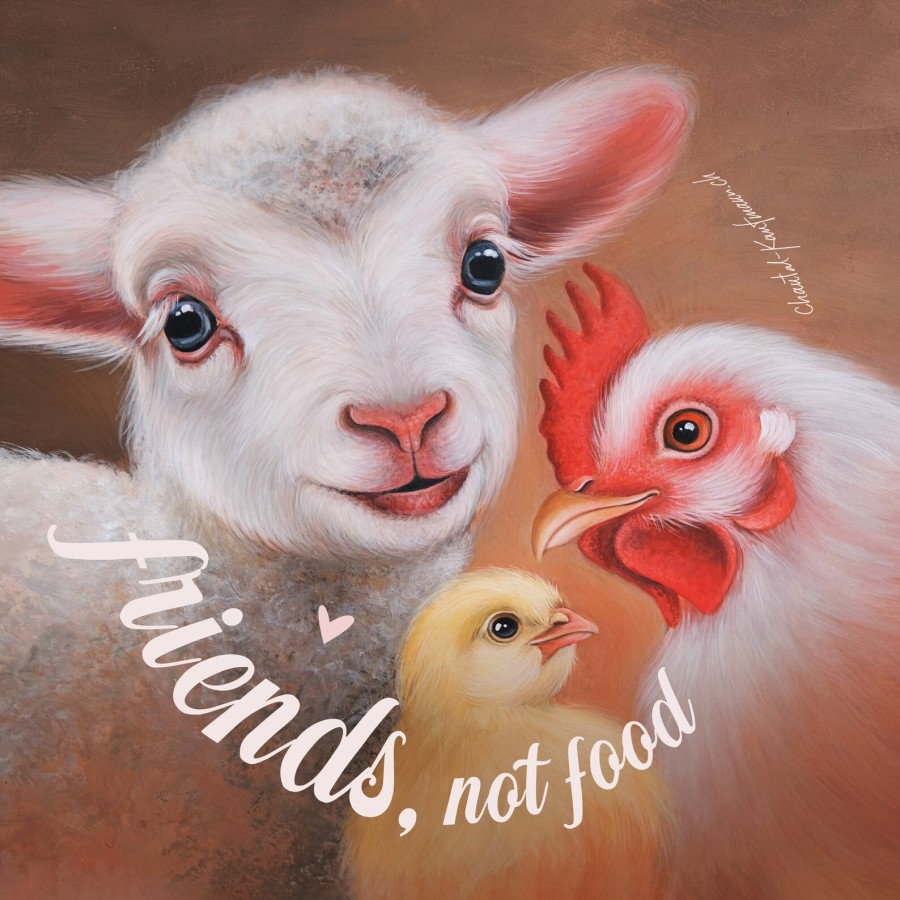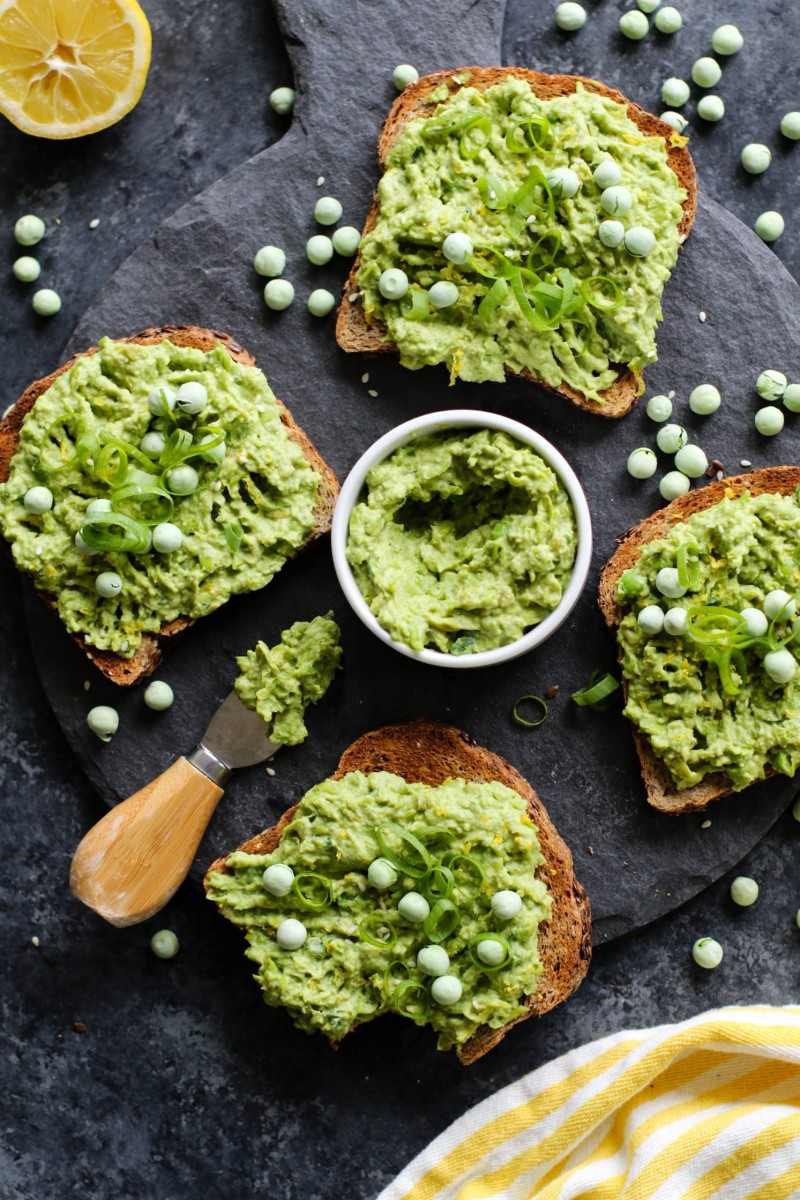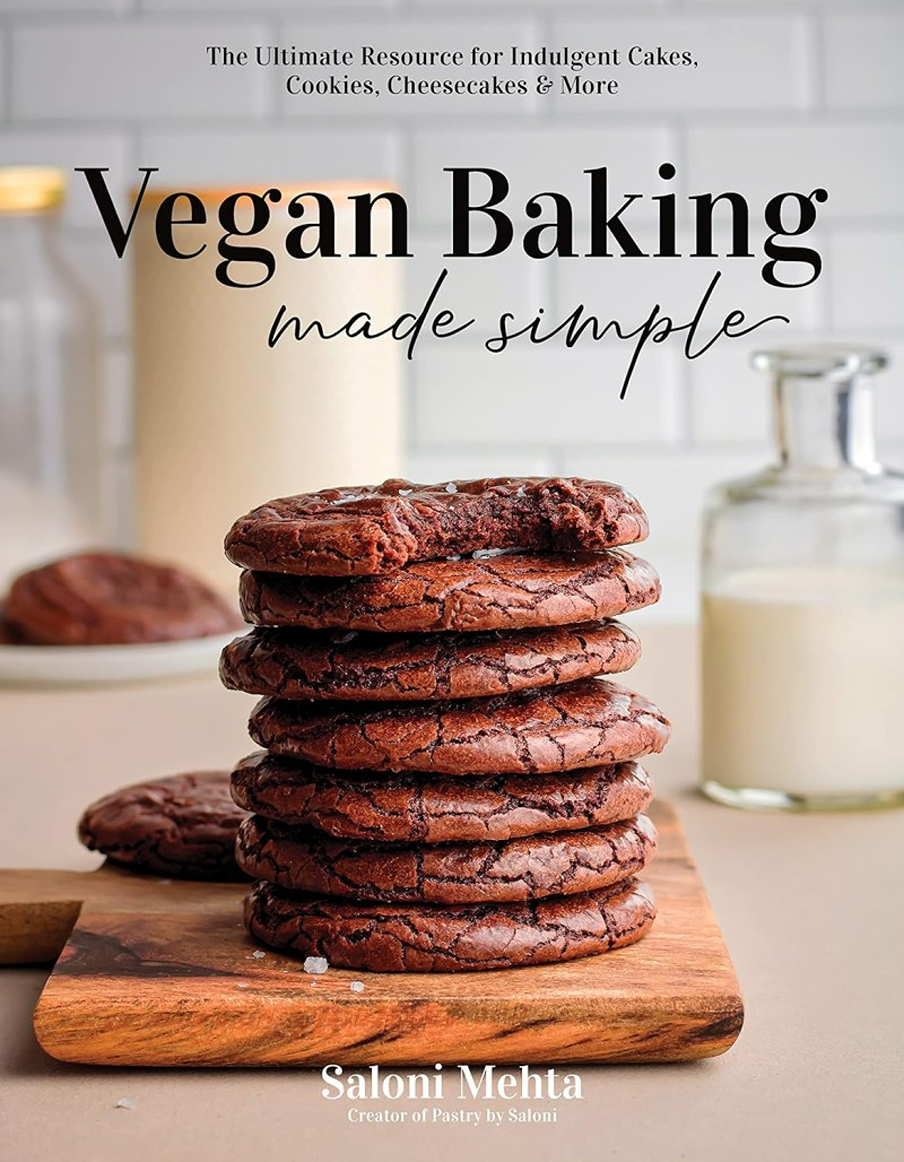Simple Recipes to Use Leftover Cauliflower

Creamy Cauliflower Soup (Ela Vegan) roasts the cauliflower (with oil and salt) then combines with beans, good veggie stock, garlic, spices, plant milk and soaked cashews (to replace cream or just add vegan cream if it’s simpler).
Avoid feeding cauliflower to young children and people with swallowing difficulties (choking hazard). Check medication, if vulnerable to kidney stones.
Keep recipes from pets, as cauliflower usually is seasoned with salt and/or cooked with onion or garlic. Read more on food safety for people & pets.
If you like making soup, invest in a stick blender to save on washing up (UK stores must take back old appliance for recycling). Freeze leftovers in silicone Souper Cubes (then just thaw and cook).
Cauliflower is one of England’s favourite vegetables. First cultivated in Cyprus, it’s related to broccoli, the florets are super-tasty in soup or (vegan!) cauliflower cheese. But also as a mild vegetable, it makes a great base for desserts and cakes, don’t you know?
Most people who get ‘gas’ from eating cauliflower, is simply due to not eating enough regular fibre, so your body goes into shock! Try gradually introducing small amounts, and you should be fine.
How to Buy & Store Cauliflower
Mass-grown cauliflower is pushed on with artificial fertiliser for rapid development, but mushy florets. Organic cauliflower is grown slowly and naturally, on mineral-rich soil.
The result is smaller, firmer caulis with exceptionally nutty flavour and crunch. For zero food waste, you can eat the leaves too – they’re tender and sweet. River Cottage (above is a real organic cauliflower, grown by their farmers in Devon).
If you can get thee to a farm shop, so much the better. That’s because nearly all supermarkets sell tiny cauliflowers in massive plastic wrap. You can legally just leave the plastic wrapping on the counter.
Every time I buy cauliflower, I wonder why it needs a plastic hat? Supermarket shopper
If not, then you can place it in supermarket bag bins (however, someone recently put an AirTag in a supermarket bin, and found it went to the incinerator, not the recycling plant).
The supermarket responded that it was due to being difficult to all the different plastics bundled together. However, it’s still best to place them here than litter them (the incinerator does at least turn the plastic waste into energy – hopefully!)
A quick look online found that Tesco cauliflowers were grown in Belgium, ASDA (to be fair) was selling British cauliflowers.
But Sainsburys’ cauliflowers were grown in ‘France, Netherlands, Spain or UK) so take your pick. These have 1-star reviews, including ‘looks like it’s about to die’ and ‘if it were any smaller, they’d be paying me’.
Good cauliflowers should have creamy-white florets, fresh green leaves and white stalks. If you see any yellow leaves, slimy stalks or ‘brown spots’ then leave it on the shelf.
In season in both early spring (and late summer to winter), you can keep cauliflower in the fridge for up to a week (supermarkets unfortunately remove a lot of the leaves for space, when in fact these help to keep the cauliflowers fresher for longer).
Supermarkets Are in Cauli Hot Water
Many supermarkets leave British cauliflowers to go mouldy in fields, in order to buy ‘bigger cauliflowers’ from Spain. Farmers are furious, and quite rightly so.
Recently ‘the weather’ caused customers to complain that some supermarkets were ‘the size of an egg’, and another supermarket rejected 1200 due to being ‘too ugly to sell’. Yet farm shops use better growing practices, so this would never happen.
Manchester food co-operative Unicorn Grocery sells organic affordable cauliflowers. When it’s raining, it ‘imports’ from Penzance in Cornwall (the unique microclimate of being 5 degrees warmer than the rest of the UK is ideal for winter caulis)! Use their cauliflowers to make this simple vegan Alfredo pasta sauce.
Trucking in cauliflowers from Europe means more traffic and pollution. All while supermarkets promote ”food security’, ‘low food miles’ and ‘supporting British farmers’.
How to Prepare & Cook Cauliflower
To prepare fresh cauliflower, trim the leaves and remove the core, then steam the florets (you can also add them to stir-fries or eat them raw in salads). The florets are great in homemade piccalilli (a kind of mustard pickle).
If you have too much cauliflower, you can blanch the remaining (rinsed) florets in boiling water, drain and plunge into iced water, then drain again. Then just transfer to reusable silicone freezer bags (label and seal) and cook straight from frozen.
Cauliflower leaves/florets are safe to compost, but scraps from alliums (onion, garlic, shallots, chives, leeks) and citrus/rhubarb scraps could harm compost creatures, due to acids. So just bin them, to naturally break down.
If you don’t like the ‘sulphur smell’ when cooking cauliflower, just add a few celery seeds (if not allergic) or a few drops of white cooking vinegar. You can even use cauliflower (like rice) as a neutral ‘base’ for puddings and ice-cream cakes, due to its neutral flavour.
You can also eat cooked cauliflower leaves. They are good in soups (to sub bok choi) or you can even roast them. Oddbox has a few simple recipes.
A Tasty Vegan Cauliflower Cheese Recipe

This recipe for vegan cauliflower cheese (The Veg Space) is comfort food in a bowl. A simple homemade white sauce is combined with dairy-free milk and Flora vegan butter (no palm oil) and vegan cheese, topped with breadcrumbs.
Broccoli & Cauliflower Soup Recipe

Broccoli & Cauliflower Soup (The Veg Space) pairs these vegetable cousins together, for a simple affordable homemade soup.
Made with vegan cream, this also freezes well, so ideal to pour portions into your SouperCubes, then just pop in the pan to defrost, and serve with good bread.






